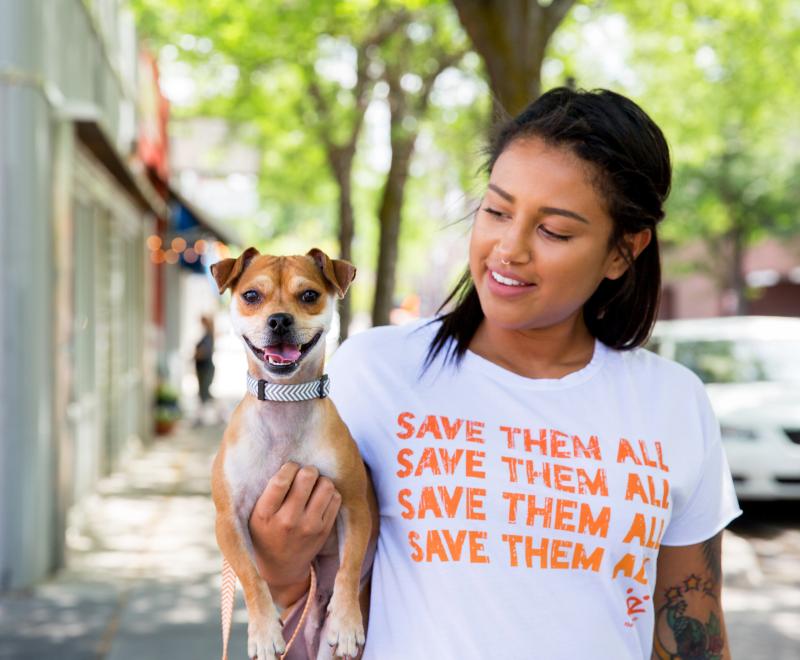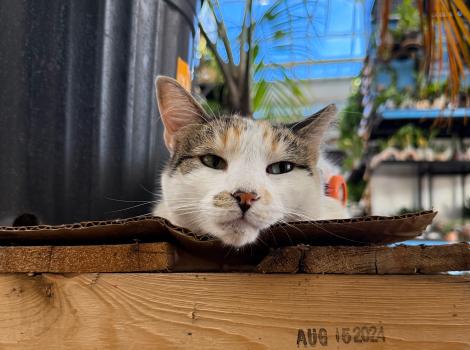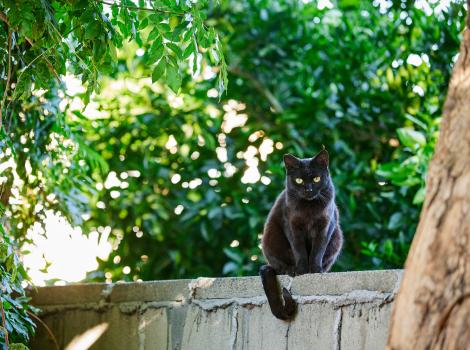Volunteer makes a big difference for tiny kittens

For Tyler Lisonbee, it doesn’t get much better than when the ailing kittens he’s caring for start to get better — or when a kitten who’s wary of people learns to trust him. “Seeing them turn big corners, that’s what motivates me,” he says about the palm-sized felines he fosters with Best Friends Animal Society in Salt Lake City.
Tyler’s foray into fostering began about a year ago after he was inspired by The Kitten Lady videos on YouTube. He began with a pair of kittens who were just 4 weeks old. Since then, his home has become a respite for felines who need a place to heal and recover before getting adopted.

Kitten confidence
It was those first two kittens Tyler fostered who opened his eyes to all that goes into caring for newborn felines. He took care of them as they grew up, and they helped him grow into his role as a foster volunteer.
“Fostering can come with a huge learning curve,” says Tyler, who up until that point had only cared for adult cats. “The staff gave me a crash course in syringe-feeding, and the more I fed the kittens, the more I learned.”
[Kitten kits prepare the public to save lives]
The kitten duo flourished in Tyler’s home, and while they grew Tyler’s confidence grew, too. After the kittens were adopted, he fostered another young pair. And then another. Each experience was different and sharpened his skills.
“Eventually, I moved on to cats who needed subcutaneous fluids, various medications, feeding tubes, and (had) other special needs,” he says, adding that having support and guidance from the Best Friends team was the reason he decided to welcome cats with medical needs into his home. Now, when he hears of kittens who need extra care, he often offers to foster them. The foster team doesn’t even need to ask.

Saving Spartacus
It’s the training he received from Best Friends, coupled with his experience, that made it possible for him to foster a cat named Spartacus, who arrived with a hind leg that was so severely broken it had to be amputated.
But that wasn’t the only medical obstacle standing in Spartacus’ way of getting adopted. He also had an upper respiratory infection so acute that it affected his ability to eat.
The veterinary team surgically implanted a feeding tube to ensure Spartacus got the nutrients he needed to beat the infection and eat on his own again. Then the foster team started looking for a home for him with someone who had the skills to help him heal. They didn’t have to look long. Tyler was quick to throw his hat in the ring, so to speak, to foster him.
For the next couple of weeks, Tyler cleaned and dressed Spartacus’ incisions and fed him through the feeding tube. It wasn’t an easy time for Spartacus, but Tyler had reason to be optimistic because every day the cat got a little stronger. Eventually, Tyler noticed a shine to Spartacus’ fur. His blue eyes looked brighter, too. About two weeks after arriving at Tyler’s home, he no longer required a feeding tube. A few weeks after he started eating on his own, Spartacus was adopted.

Cuddling kittens with panleukopenia
Now Tyler is focused on helping kittens with panleukopenia, a highly contagious virus that can be fatal for kittens without the critical care they need. This is where help from foster caregivers like Tyler comes in.
Kittens who test positive for the virus must be quarantined to avoid spreading it to otherwise healthy cats and kittens. This can be difficult to do in shelters, especially when space is limited.
Tyler has helped many kittens beat panleukopenia and thrive. That’s what keeps him going when, despite everyone’s best efforts, a kitten succumbs to the virus. “Fostering can be an emotional rollercoaster, but even when kittens don't make it, I know that they were loved for the short time I had them,” Tyler says.
[Kitten comes back from the brink]
That love is one of the most important elements that foster volunteers have to offer. “Staff need to be very cautious when caring for kittens with panleuk, and that means cuddling is not allowed,” says Pat Theobald, Best Friends community engagement manager in Salt Lake City. “Caregivers like Tyler make it possible for these kittens to get the kind of individual attention that just isn't possible in a shelter.”
So what does Tyler do when he isn’t fostering kittens? He’s currently pursuing a degree in zoology, and he loves taking advantage of all that comes with living in northern Utah. He mountain bikes in the summer and skis in the winter.
As for fostering with Best Friends, Tyler has no plans of slowing down anytime soon. Knowing that he’s helping save lives keeps him going. “I’m proud of the difference I make,” he says.







